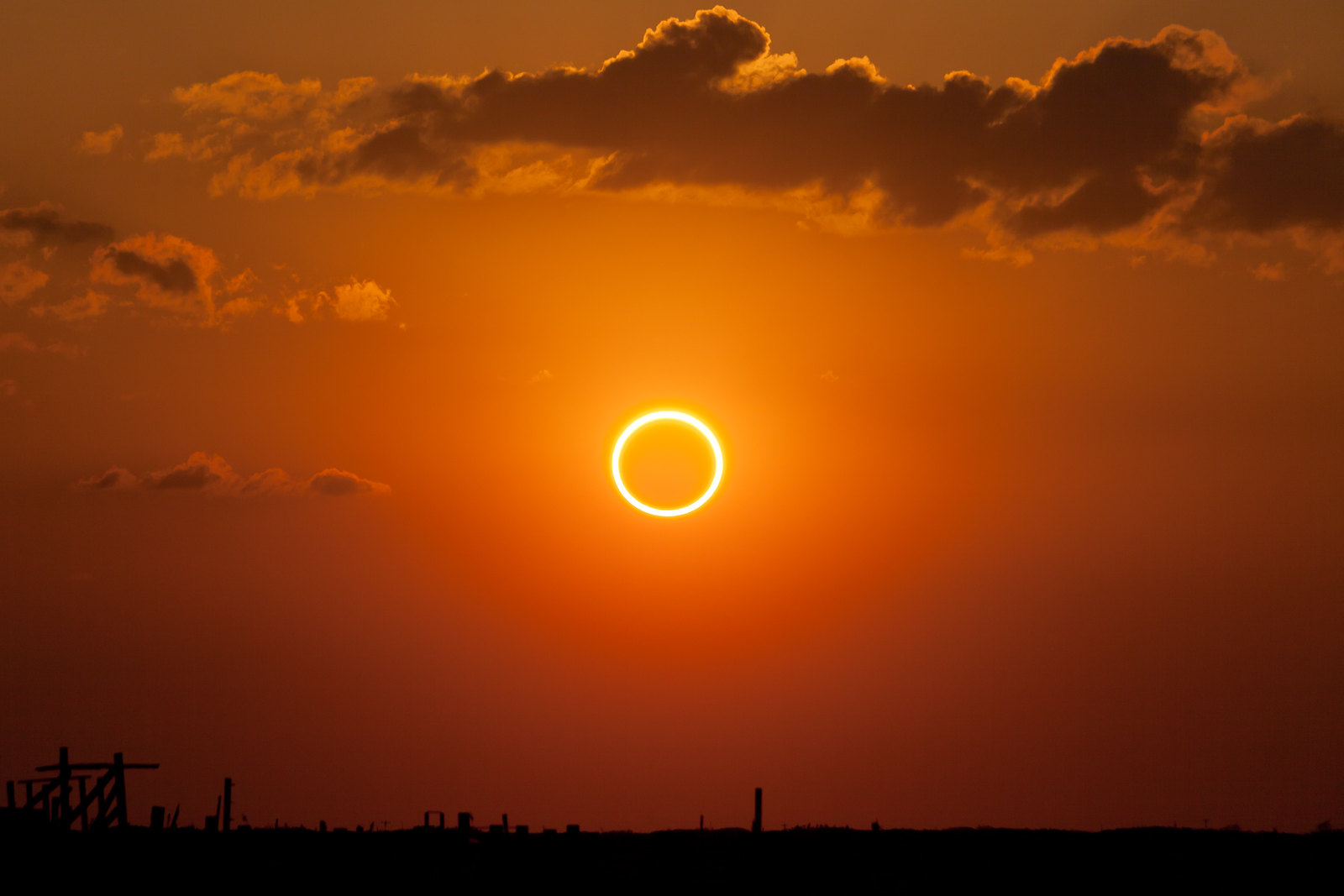In Africa this week? The final solar eclipse of 2016 graces the continent on Thursday, September 1st. This eclipse is annular only, as the diminutive Moon fails to fully cover the disk of the Sun.
The 99.7 kilometer wide path crosses the African countries of Gabon, Republic of the Congo, Democratic Republic of the Congo, Tanzania, Mozambique and Madagascar. The antumbra (the 'ring of fire path of the shadow annulus as viewed from Earth) touches down in the southern Atlantic at 7:20 Universal Time (UT) on September 1
st
, before racing across Africa and departing our fair planet over the Indian Ocean over four hours later at 10:55 UT. Partial phases for the eclipse will be visible across the African continent as far north as southern Morocco, Egypt and the southwestern portion of the Arabian peninsula.
[caption id="attachment_130531" align="aligncenter" width="580"]
The path of this week's eclipse across Africa. Credit:
Xavier Jubier
.[/caption]
Tales of the Saros
This eclipse is member 39 of 71 solar eclipses for
saros 135
, which runs from July 5
th
, 1331 to August 17
th
, 2593. This series finally produces its first total solar eclipse on March 29, 2359.
[caption id="attachment_130533" align="aligncenter" width="460"]
A daguerreotype of an annular eclipse from 1854, part of the same saros 154 cycle.
Public domain image
.[/caption]
Annular eclipses occur when the Moon is too distant to cover the Sun as seen from the Earth. The
Moon reaches apogee
, or its most distant point from the Earth on September 6th, just five days after New and the September 1st eclipse.
How common (or rare) are solar eclipses, annular or total? It's worth noting that as the
2017 total solar eclipse crossing the contiguous United States approaches
,
creationist websites
are again promoting the idea that the supposed 'perfection' of solar eclipses is evidence for intelligent design. If solar eclipses are an example of a higher plan to the cosmos, they're not a very good one... in fact, in our current epoch, partial eclipses, to include annulars,
are much more prevalent
. If, for example, the Moon's orbit was aligned with the ecliptic, we'd see two eclipses – one lunar and and one solar – every month, a much rarer circumstance... a creator could have really used that to
really
get our attention. And Earth isn't alone in hosting total solar eclipses: in our own solar system, you can make a brief visit to Jupiter's large moons and also witness total solar eclipse perfection.
Unlike a total solar eclipse, proper eye protection must be worn throughout all stages of an annular eclipse. We witnessed annularity from the shores of Lake Erie back in 1994, and can attest that a few percent of the Sun is still surprisingly bright. The tireless purveyors of astronomy over at
Astronomers Without Borders
are working to distribute eclipse glasses to schools and students along the eclipse path.
[caption id="attachment_130534" align="alignleft" width="250"]
An animation of Thursday's eclipse. Credit: NASA/GSFC.[/caption]
Are you in the path of this week's annular eclipse? Let us know, and send those images in to
Universe Today on Flickr
.
We'll most likely see more than a few images of the eclipse from space as well. And no, we're not talking about the cheesy composite that now makes its rounds during every eclipse... solar observing satellites to include the European Space Agency's Proba-2 and the joint JAXA/NASA Hinode mission typically capture several successive eclipses as they observe the Sun from their vantage point in low Earth orbit.
At this stage, we only know of one webcast set to broadcast the eclipse live: the venerable
Slooh website
.
Let us know if you're planning on setting up an ad hoc live webcast of the eclipse, even from outside the path of annularity.
And of course, the big question on every eclipse-chaser's mind is:
when's the next one
? Well, we've got a subtle penumbral eclipse on September 16
th
, 2016, and then the next solar eclipse is another annular favoring Argentina, Chile and the west coast of southern Africa on February 26
th
, 2017.
Don't miss this week's annular solar eclipse, either live online or in person, for a chance to marvel at a celestial phenomenon we all share in time and space.
-Eclipse... science fiction? Yup... read Dave Dickinson's
eclipse-fueled tales
*Peak Season*
,
Exeligmos
,
Shadowfall
and
*The Syzygy Gambit*
.
 Universe Today
Universe Today
